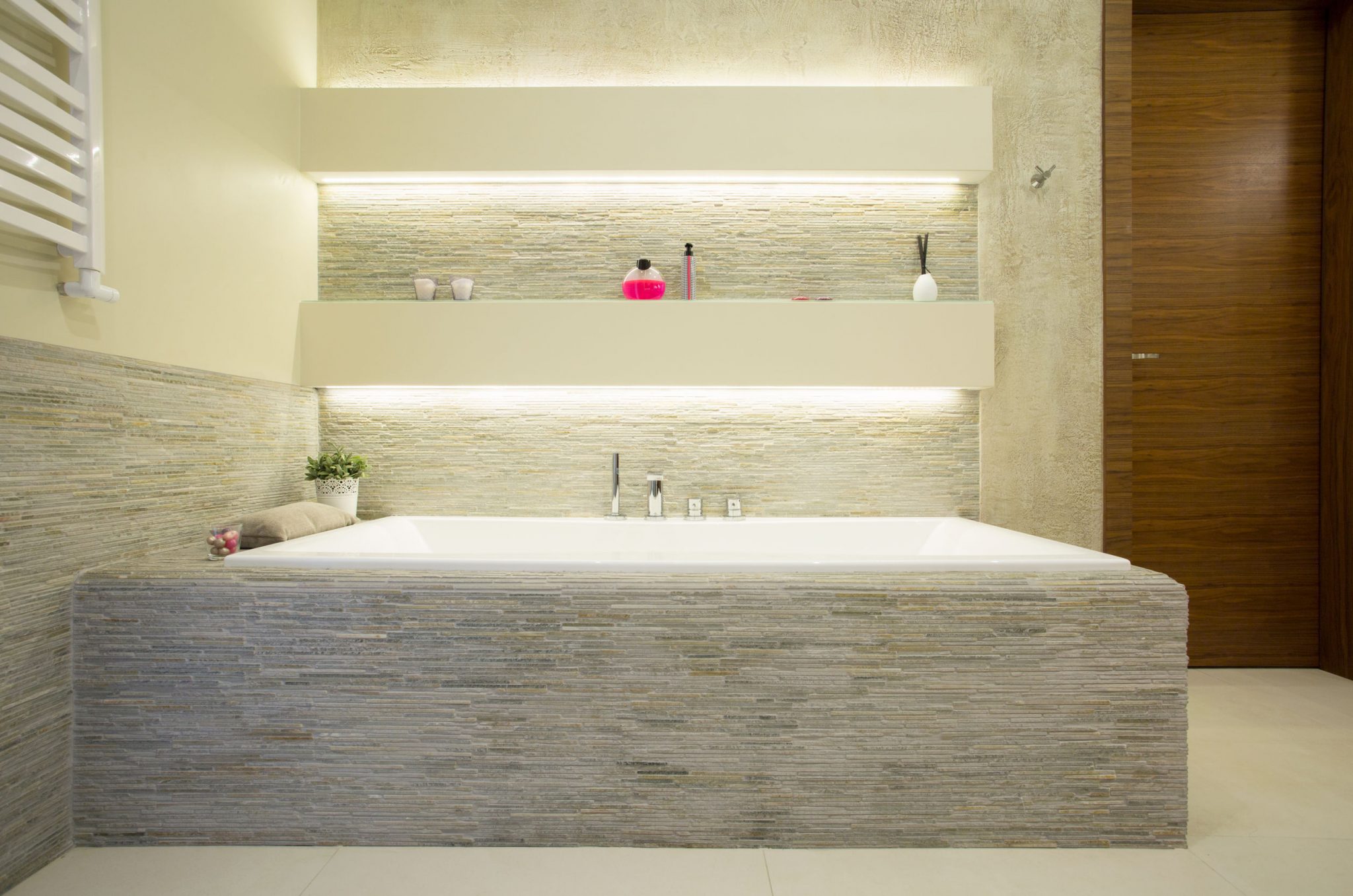
Rainfall Shower. To enjoy the ultimate lap of luxury, homeowners should consider an open, customized walk-in shower with a generous sized, overhead rainfall shower. These showers are designed to make one feel as if he or she is standing in the teeming rain, rather than merely under one stream of water. Often called monsoon showers, these models have been particularly popular among consumers over the past two years and this trend is likely to increase in the future.
Mosaic Tiles. Mosaic patterned tiles are another option to which customers should give thought when remodeling a bathroom. With hundreds of mosaic designs from which to choose, it is almost guarantee that one will find the ideal pattern. Because of their versatility, such tiles blend well with essentially any type of decor, from old clawfoot bathtubs to modern vessel sinks and backlit mirrors.
Day Spa Design. Day spas symbolize rest and rejuvenation, which is a trend that has overtaken the home interiors market over the last few years. Architects are adding such designs to new homes, and many consumers who are planning to remodel are opting for whirlpool baths, hot tubs, saunas and steam shower rooms to their bathrooms and create a luxurious setting that everyone in the home can enjoy.
Frameless Showers. Minimalist and sleek, the frameless enclosure is perhaps the most popular shower trend on today’s home-improvement market. This option cuts back on all unnecessary frills, using only chrome brackets to ensure structural integrity. The result of the design is an ultramodern, watertight enclosure that not only gives the room a highly contemporary flair, but is also maintenance free.
Although preferences vary, virtually anyone can find the perfect design when all helpful bathroom tips are considered. However, it is essential to ensure that an experienced and reputable company completes the renovations, to ensure a satisfactory outcome. Those planning such a project should contact a qualified home improvement company for an estimate and review the many beautiful and interesting options available.

One of the remedial tips to remember is that placing a one-piece over old tile can actually foster mold growth that may already be trapped between the wall and the old tile and can eventually compromise your wall structure. The best remodeling efforts for old, tired bathrooms involve tearing out the old tile and installing new material. Here are some bathroom tips for selecting the right tile to make your bathing oasis look fresh and inviting.
Good planning is at the base of all bathroom renovations, tile included. Make sure that you know where all elements will be located. Don’t assume that the tile is the size that it says it is. Many larger tiles are also manufactured for the European market and are measured in centimeters, making your measurements slightly off. Measure and then lay tile from the ceiling down to get the best effect from patterns.
Pay attention to the differences between wall and floor tile as the latter have a higher wear rating issued by the National Floorcovering Alliance. Most floor tiles have a rating of 3, 4 or 5, while tall tiles have a rating of 0, 1 or 2. Wall tiles are usually smoother and slicker than those for the floor, which will usually be thicker and often have a rougher surface for traction. Choose floor tiles that are glazed, or ones that can absorb glazes, to make them waterproof. Wall tiles usually have a semi-gloss or matte finish and maybe too porous. Porous wall tiles should not be used in a backsplash or bathtub/shower area.
Three different types of tile are well suited for bathroom renovations: travertine, porcelain and mosaic tiles. Travertine, cut from natural limestone, is elegant and is a good choice for floors and walls in upscale installations. Porcelain is manufactured by firing sand at high temperatures and pressure. It’s available in a wide range of sizes. Choose mosaic tiles, which usually come in smaller sizes, to create a statement and draw attention to an area. Since they easily contour around curves, they are a good choice for showers and drains. Use them sparingly as repeated patterns can be overwhelming.